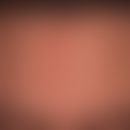Synonym(s)
Brush Hair; Ichthyosis thysanotrichica; Keratosis spinulosa cum trichostasi; Keratosis spinulosa cum trichostasis; Lanugo comedones; Thysanothrix
HistoryThis section has been translated automatically.
Galewsky, 1911; Franke, 1912; Nobl, 1913; Hare, 1953; Ladany, 1954
DefinitionThis section has been translated automatically.
Frequent skin disease in older individuals with retention of several bundled terminal hairs in a hyperkeratotic sebaceous gland follicle. They originate from a hair transplant.
You might also be interested in
ManifestationThis section has been translated automatically.
Occurs mainly in old people.
LocalizationThis section has been translated automatically.
V.a. Back, lateral thorax parts, neck, zygomatic arches, forehead or nasal wings are affected.
Clinical featuresThis section has been translated automatically.
Dilated, blackish follicular openings (pseudocomedones) with dark stained spine. Expression of the follicular filament is possible.
HistologyThis section has been translated automatically.
Dilated distended hyperkeratotic infundibulum with a mantle of corneocytes. Bundles of short lanugo hairs (10-50 lanugo hairs) and a single associated hair root (assignment recognizable in serial incisions). No perifollicular inflammatory reaction! The growth of two hairs from one hair follicle is called districhiasis.
Differential diagnosisThis section has been translated automatically.
TherapyThis section has been translated automatically.
A treatment is only necessary for cosmetic reasons. Mechanical squeezing of the follicle filaments with a comedone squeezer by a medical cosmetician. Quickly polymerising cyanoacrylate adhesives (superglue) are useful for removal, with the help of which the superficial layers of the horny layer together with the associated follicle retentions can be peeled off. Supportive therapy with vitamin A acid-containing topicals such as isotretinoin (e.g. Isotrex cream/gel, 1-2 times/day) or tretinoin (e.g. Cordes VAS cream, 1-2 times/day) or glycolic acid-containing topicals (e.g. Eff-alpha, Neostrata AHA solution/cream 1 time a day). However, the success is only moderate. In case of persistent therapy-resistant processes try chemical peeling with glycolic acid.
LiteratureThis section has been translated automatically.
- Alshami MA (2015) Incidence of trichostasis spinulosa at a single institution in Yemen. Int J Dermatol doi: 10.1111/ijd.13110.
- Brown Falco O, Vakilzadeh F (1967) Trichostasis spinulosa. Dermatologist 18: 501-504
- Hare PJ (1953) Trichostasis spinulosa with histological features of lichen spinulosus. Br J Dermatol 65: 322-323
- Ladany E (1954) Trichostasis spinulosa. J Invest Dermatol 23: 33-41
- Manuskiatti W et al (2003) Treatment of trichostasis spinulosa in skin phototypes III, IV, and V with an 800-nm pulsed diode laser. Dermatol Surg 29: 85-88
- Naveen KN et al (2014) Trichostasis spinulosa: An overlooked entity. Indian Dermatol Online J. 5 (Suppl 2):132-13
- Strobos MA et al (2002) Trichostasis spinulosa: itchy follicular papules in young adults. Int J Dermatol 41: 643-646
Incoming links (7)
Brush hair; Districhiasis; Galewsky, Eugen; Keratosis spinulosa cum trichostasi; Lanugo comedones; Thysanothrix; Trichodysplasia spinulosa ;Disclaimer
Please ask your physician for a reliable diagnosis. This website is only meant as a reference.




